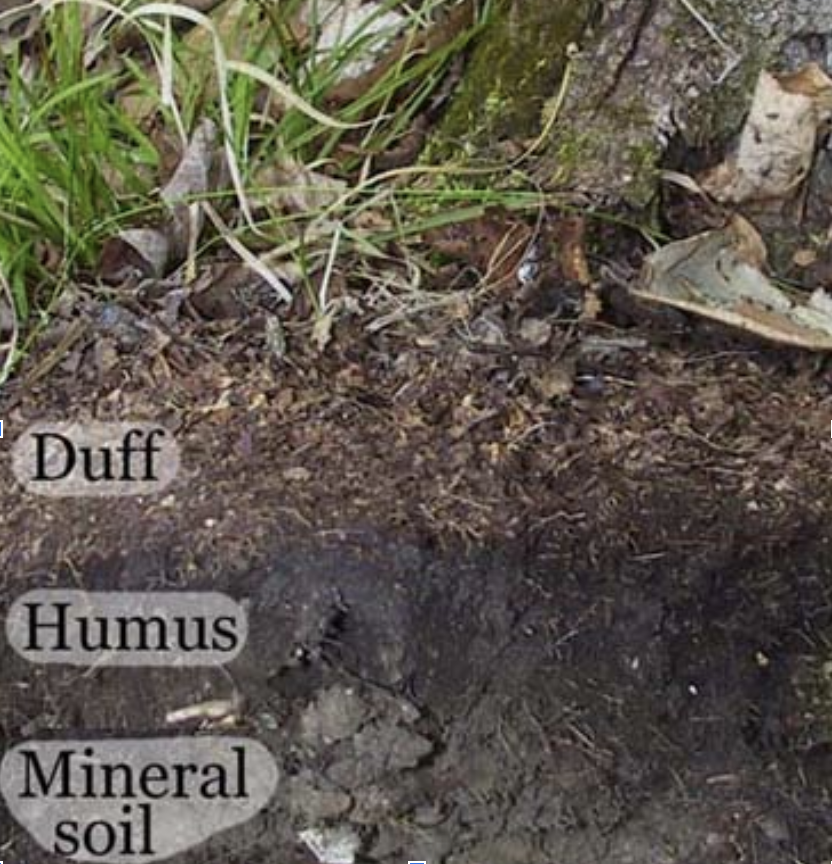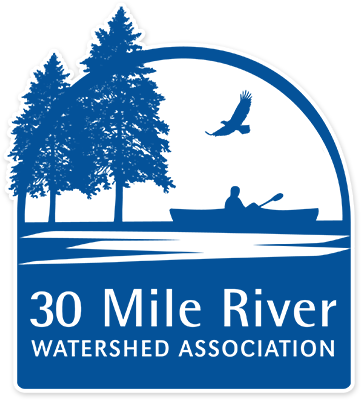Leaves, needles, small twigs, and other organic matter that collect on your property are very valuable in keeping our lakes clean and healthy. This natural litter or “duff” actually plays an important role in woodland and shorefront ecosystems. The natural duff layer acts like a sponge that filters runoff and prevents pollutants from getting into the lake. Duff also promotes vegetation growth, nourishes the soil below it, and provides important wildlife habitat. This is good for both your shorefront and water quality in the lake. Why?
The accumulation of organic litter forms an insulating layer over the soil, offering protection from both the winter’s cold and the summer’s heat. A healthy duff layer absorbs rain and runoff, and can hold in moisture, preventing the soil from drying out in the summer months.
What about the larger pieces of twigs and stems? Leave those too! Coarse litter like twigs and stems add texture and woody material to developing soils, improving drainage, water storage, and supports a greater diversity of vegetation. Seedlings can sprout in the moisture-rich duff layer until roots can make their way into the soil below it.
The duff layer is not only made up of plant material, it is teeming with organisms and life! Invertebrates, such as earthworms, beetle larvae, millipedes, mites, slugs and snails shred organic plant material into smaller pieces. Microorganisms like bacteria and fungi further decompose these components into forms that are usable to plants. Without the duff layer, and the diverse community of decomposers that live there, important ecosystem services like nutrient cycling would not occur. The soil then becomes depleted and plants cannot grow.
These tiny decomposer organisms are not only creating healthy soil, they are also part of the greater food web. Predatory insects like centipedes, spiders, and beetles, and animals like salamanders, turtles, birds, and mice feed on earthworms and insects. These animals are then eaten by larger birds and mammals. Maintaining a healthy duff layer (and less lawn and bare area) on your shorefront property protects soil, water quality, and wildlife.
Lake-friendly Yard Maintenance Routine:
STEP #1: Leave the leaves! And needles, too. DO NOT rake your shorefront or paths. This exposes bare soils that can erode or wash into the lake. In areas where vegetation is difficult to establish (for example, under coniferous trees on many lakefronts), allowing duff to accumulate will both prevent soil erosion and promote growth in the understory.
STEP #2: On lawn areas, you can simply mulch the leaf litter with your mower (set at the highest setting). This will replenish your soil’s fertility, help suppress weeds, and retain moisture. No fertilizers needed! (or ditch the lawn altogether, and skip to Step #3 below.)
STEP #3: Sit back, relax, and enjoy the view.
If you have bare soil on your property, you can jump-start the duff layer by adding erosion control mulch (ECM) and allowing the area to naturalize. Contact 30 Mile for a list of local ECM suppliers.

This article was included in 30 Mile's May 2023 newsletter. To view the full newsletter, click here.
